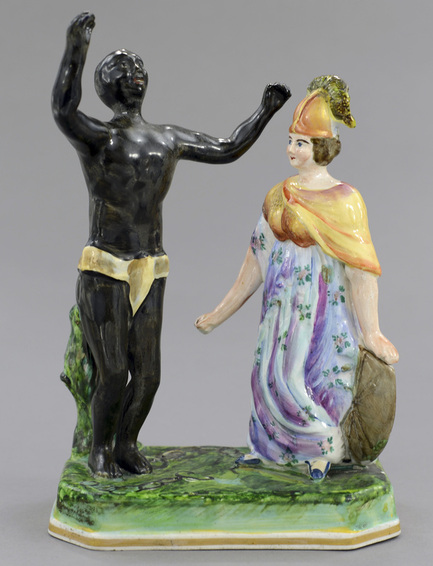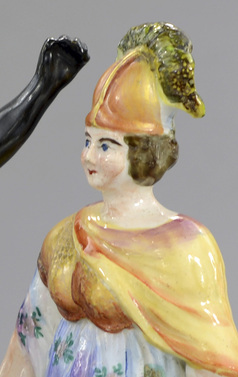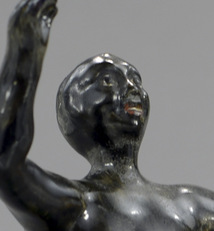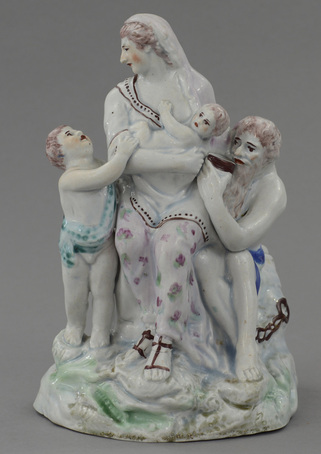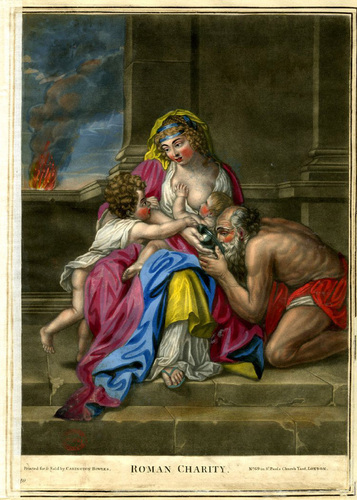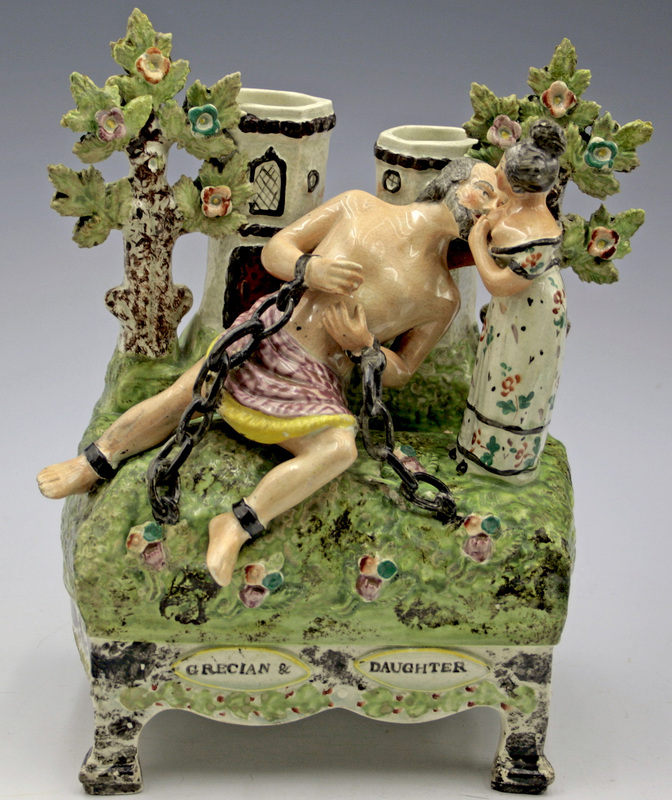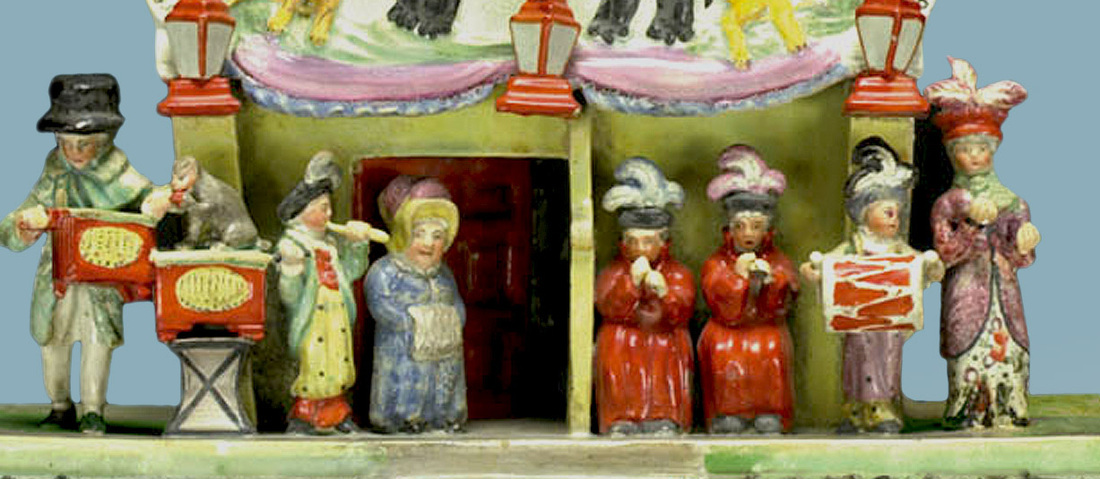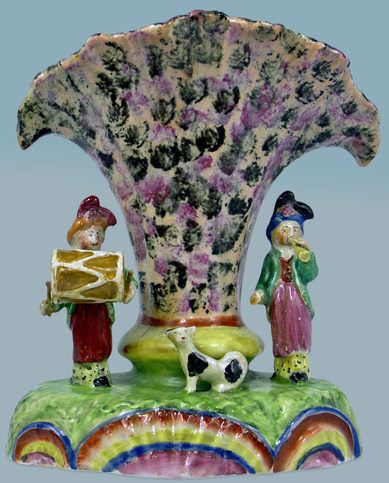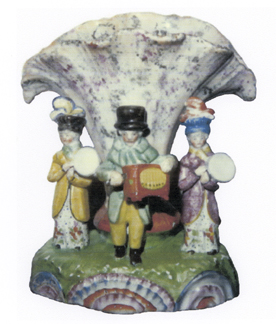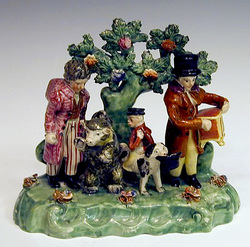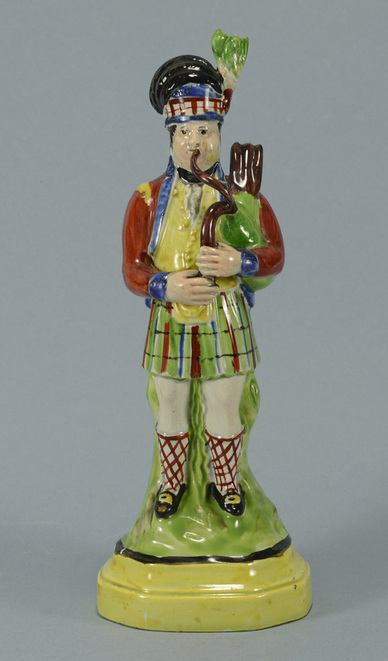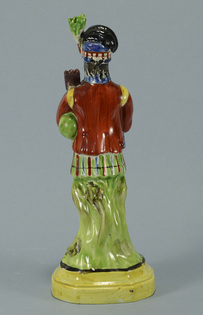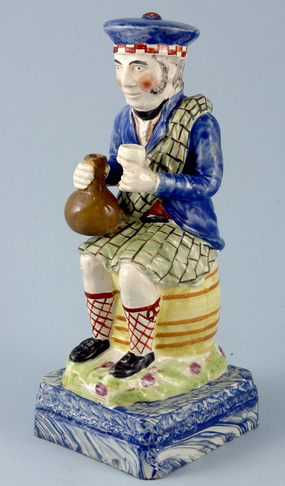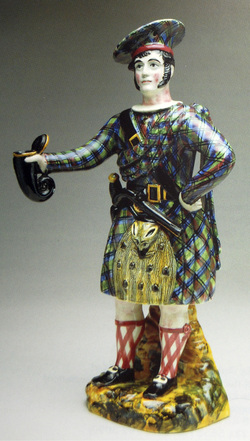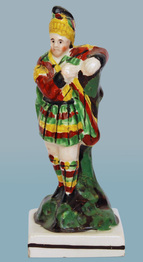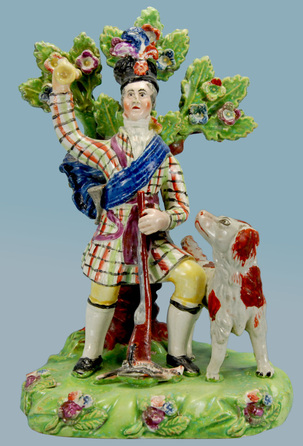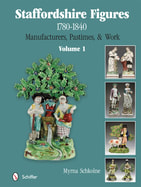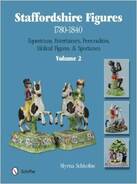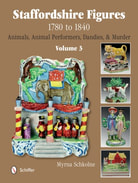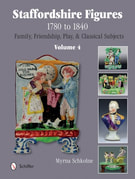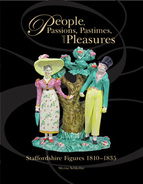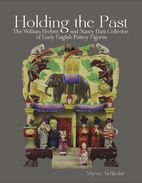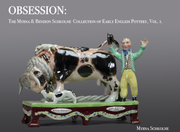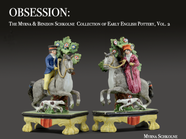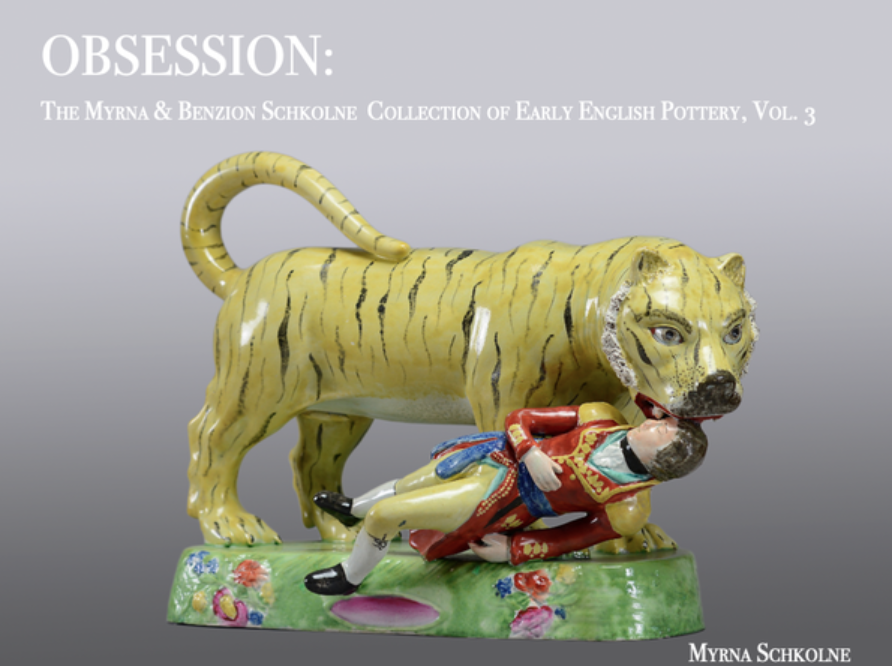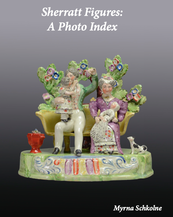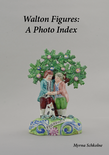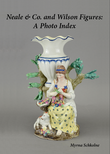The figure does more than chronicle history. It captures the joy of the moment and connects us to the past in a very engaging and human way. You can almost hear the music in the background as a small, very white, decorously-clothed Britannia dances alongside a huge, very black, scantily clad free slave.
The figure is 7 inches tall, and the pearlware body is of superb quality. The glaze is silkily tactile. Despite its fineness, it retains the charm of pottery because the modeling and decorating is that little bit endearingly clumsy--Britannia's plump arms, the expressions on the faces. To top it, there is soft gilding across Britannia's breast.
Now if all this were not enough, here's the clincher: the figure is perfect, with no repairs or restorations.
I have enjoyed this image on one of my monitors for a long time, and it often distracts me from work. My words can't do it justice. A picture is supposedly worth a thousand words, so I thought I would share it with you.
